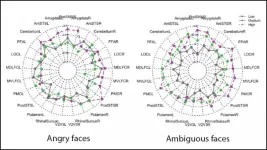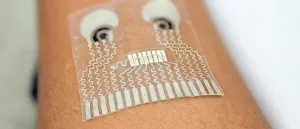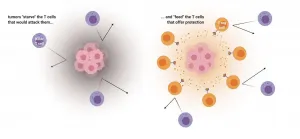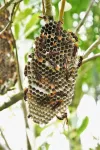(Press-News.org) In a new study out of University of California San Diego School of Medicine, researchers found a drug used for heart failure improves symptoms associated with postural orthostatic tachycardia syndrome, otherwise known as POTS. This complex, debilitating disorder affects the body's autonomic nervous system, causing a high heart rate, usually when standing.
Writing in the February 15, 2021 online issue of the Journal of the American College of Cardiology, study authors investigated the drug ivabradine and its effects on heart rate, quality of life and plasma norepinephrine levels in persons living with POTS. Norepinephrine is a stress hormone and neurotransmitter. In blood plasma, it is used as a measure of sympathetic nervous system activity. Trial participants experienced a reduction in heart rate, improvement in their symptoms and overall quality of life one month after taking the drug.
"Ivabradine is a novel agent that's FDA-approved for heart failure, but based on its mechanism we thought it could be helpful for patients with POTS as it reduces heart rate without impacting blood pressure," said Pam Taub, MD, cardiologist at the Cardiovascular Institute at UC San Diego Health and associate professor of medicine at UC San Diego School of Medicine. "When we can lower the heart rate, we're providing these patients with the ability to stand up, something they couldn't do without difficulty before due to their POTS diagnosis."
The study involved 22 individuals whose average age was 32 years. Each participant had been screened and recruited from cardiology clinics at UC San Diego Health from 2018 to 2020.
The study utilized a randomized, double-blinded, placebo-controlled crossover design in which patients started on either ivabradine or a placebo for one month. At the end of the month, all participants underwent a washout period where neither drug nor placebo was taken for one week. After the washout period, the participants who had previously received ivabradine switched to placebo and vice versa for one month.
Over the course of the two months, patients also met with researchers for seven different clinic visits in which plasma norepinephrine levels were measured and head-up tilt testing conducted to observe the patient's heart rate when sitting, lying down or standing up.
"Before the study, these patients would be living with elevated heart rates ranging between 100 to 115 beats per minute when standing," said Taub. "After taking ivabradine twice a day for one month, the standing heart rate decreased significantly to around 77 beats per minute compared to the placebo group. Participants also reported improvement in quality of life measures when on the drug."
The researchers also noted ivabradine was well-tolerated with no significant side effects while other drugs used to lower heart rate, such as beta blockers, can cause fatigue and decreased blood pressure.
Taub said the study was the first randomized clinical trial using ivabradine to treat POTS.
POTS is typically caused by a viral infection, trauma, surgery or enforced bedrest, and most commonly affects young women who are either athletes or highly active. Currently, there is no FDA-approved treatment for POTS and the condition can severely impact quality of life. Other symptoms of POTS include "brain fog," lightheadedness, palpitations, tremors, weakness, blurry vision and fatigue.
Recently, POTS has been identified as a potential "long-hauler" symptom of COVID-19.
"In our contemporary practice, we are seeing patients who have previously been infected with COVID-19 present with symptoms consistent with POTS," said Jonathan Hsu, MD, cardiologist at UC San Diego Health. "Given the similarities, this study leads to the question whether therapy with ivabradine may help patients who experience similar symptoms after a COVID-19 infection, and provide an important area for future study as well."
The authors said they hope ivabradine will be considered as a possible treatment option for those with a confirmed diagnosed of POTS. Currently, the drug is not FDA-approved for the disease and when used clinically it would be "off-label" use.
"Similar to patients with COVID-19, patients with POTS need to be followed carefully," said Taub. "Treatment for POTS needs to be personalized for each individual and with this drug, paired with lifestyle therapy, including exercises specific for POTS, we hope we will see more individuals overcome this unfortunate condition."
INFORMATION:
Co-authors include: Adena Zadourian, Hannah C. Lo, Cameron K. Ormiston, and Shahrokh Golshan, all at UC San Diego.
Disclosure: Pam Taub has served as a consultant for Amgen, Bayer, Esperion, Boehringer Ingelheim, Novo Nordisk and Sanofi, and is co-founder of Empirium Bio. Jonathan Hsu has served as a consultant for Medtronic, Abbott, Boston Scientific, Biotronik, Biosense Webster, Zoll Medical, Pfizer, Bristol Myers Squibb, and Janssen Pharmaceuticals.
Young men with lower testosterone levels throughout puberty become more sensitive to how the hormone influences the brain's responses to faces in adulthood, according to new research published in JNeurosci.
During prenatal brain development, sex hormones like testosterone organize the brain in permanent ways. But research suggests that testosterone levels during another developmental period -- puberty -- may have long-lasting effects on brain function, too.
Liao et al. examined the relationship between puberty testosterone levels and the brain's response to faces. Liao's team recruited 500 men around age 19 who had been participants in the Avon Longitudinal Study of Parents and ...
PITTSBURGH, Feb. 15, 2021 - By capitalizing on a convergence of chemical, biological and artificial intelligence advances, University of Pittsburgh School of Medicine scientists have developed an unusually fast and efficient method for discovering tiny antibody fragments with big potential for development into therapeutics against deadly diseases.
The technique, published today in the journal Cell Systems, is the same process the Pitt team used to extract tiny SARS-CoV-2 antibody fragments from llamas, which could become an inhalable COVID-19 treatment for humans. This approach has the potential to quickly identify multiple potent nanobodies that target different parts of a pathogen--thwarting ...
What The Study Did: Data from four studies of children and adolescents exposed to major U.S. hurricanes were pooled to examine posttraumatic stress symptoms after those events and the factors associated with them.
Authors: Betty S. Lai, Ph.D., of Boston College in Chestnut Hill, Massachusetts, is the corresponding author.
To access the embargoed study: Visit our For The Media website at this link https://media.jamanetwork.com/
(doi:10.1001/jamanetworkopen.2020.36682)
Editor's Note: The article includes conflict of interest and funding/support disclosures. Please see the article ...
Scientists say they have discovered a potential new target for immunotherapy of malignant brain tumors, which so far have resisted the ground-breaking cancer treatment based on harnessing the body's immune system. The discovery, reported in the journal END ...
RIVERSIDE, Calif. -- Materials having excess electrons are typically conductors. However, moiré patterns -- interference patterns that typically arise when one object with a repetitive pattern is placed over another with a similar pattern -- can suppress electrical conductivity, a study led by physicists at the University of California, Riverside, has found.
In the lab, the researchers overlaid a single monolayer of tungsten disulfide (WS2) on a single monolayer of tungsten diselenide (WSe2) and aligned the two layers against each other to generate large-scale moiré patterns. The atoms in both the WS2 and WSe2 layers are arranged in a two-dimensional honeycomb lattice with a periodicity, ...
Engineers at the University of California San Diego have developed a soft, stretchy skin patch that can be worn on the neck to continuously track blood pressure and heart rate while measuring the wearer's levels of glucose as well as lactate, alcohol or caffeine. It is the first wearable device that monitors cardiovascular signals and multiple biochemical levels in the human body at the same time.
"This type of wearable would be very helpful for people with underlying medical conditions to monitor their own health on a regular basis," said Lu Yin, a nanoengineering Ph.D. student at UC San Diego and co-first author of the study published Feb. 15 in Nature Biomedical Engineering. "It would also serve as a great tool for remote patient monitoring, ...
PITTSBURGH, Feb. 15, 2021 - A paper published today in Nature shows how chemicals in the areas surrounding tumors--known as the tumor microenvironment--subvert the immune system and enable cancer to evade attack. These findings suggest that an existing drug could boost cancer immunotherapy.
The study was conducted by a team of scientists at UPMC Hillman Cancer Center and the University of Pittsburgh School of Medicine, led by Greg Delgoffe, Ph.D., Pitt associate professor of immunology. By disrupting the effect of the tumor microenvironment on immune cells in mice, the researchers were able to shrink tumors, prolong survival and increase sensitivity to immunotherapy.
"The majority of people don't respond to immunotherapy," said Delgoffe. "The reason ...
Researchers have found a way to use light and a single electron to communicate with a cloud of quantum bits and sense their behaviour, making it possible to detect a single quantum bit in a dense cloud.
The researchers, from the University of Cambridge, were able to inject a 'needle' of highly fragile quantum information in a 'haystack' of 100,000 nuclei. Using lasers to control an electron, the researchers could then use that electron to control the behaviour of the haystack, making it easier to find the needle. They were able to detect the 'needle' with a precision of 1.9 parts per million: high enough to detect a single quantum bit in this large ensemble.
The technique makes it possible to send highly fragile ...
[Images and video available: see notes to editors]
Wasps provide crucial support to their extended families by babysitting at neighbouring nests, according to new research by a team of biologists from the universities of Bristol, Exeter and UCL published today [15 February] in Nature Ecology and Evolution.
The findings suggest that animals should often seek to help more distant relatives if their closest kin are less in need.
Dr Patrick Kennedy, lead author and Marie Curie research fellow in the School of Biological Sciences at the University of Bristol, said: "These wasps can act like rich family members lending a hand to their second cousins. If there's not much more you can do to help your immediate family, you can ...
Feathers are a sleek, intricate evolutionary innovation that makes flight possible for birds, but in addition to their stiff, aerodynamic feathers used for flight, birds also keep a layer of soft, fluffy down feathers between their bodies and their outermost feathers to regulate body temperature.
Using the Smithsonian's collection of 625,000 bird specimens, Sahas Barve, a Peter Buck Fellow at the Smithsonian's National Museum of Natural History, led a new study to examine feathers across 249 species of Himalayan songbirds, finding that birds living at higher elevations have more of the fluffy down--the type of feathers humans stuff their jackets with--than birds from lower elevations. Published ...






